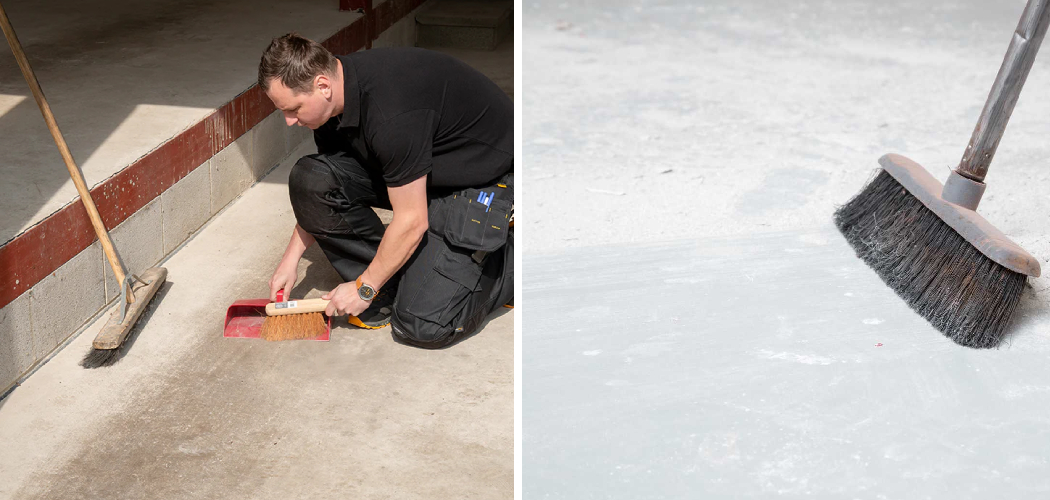Are you dealing with a concrete floor that has lost its once-gleaming shine and now appears covered in powdery dust? Don’t fret just yet, because fixing up that perfectly stylish concrete finish can be much easier than you think.
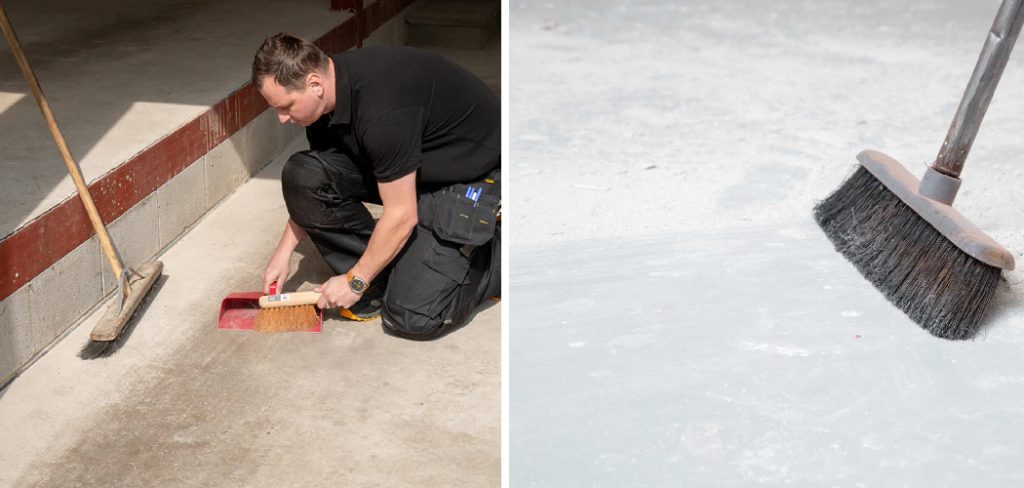
In this blog post, we’ll show you exactly how to fix powdery concrete floor so that it’s restored to its former glory and looks better than ever before – no professional handyman required! Read on for all the details.
Tools and Materials You Will Need to Fix Powdery Concrete Floor
- Dustpan and brush
- Vacuum cleaner
- Wet/dry vacuum cleaner (optional)
- Concrete sealer
- Soft scrub brush
Step by Step Guidelines on How to Fix Powdery Concrete Floor
Step 1: Clean the Concrete Floor
The first step in fixing your powdery concrete floor is to give it a thorough cleaning with a dustpan and brush or a vacuum cleaner. This will remove any dirt, dust, and debris that may have accumulated on the surface.
If you are dealing with stubborn stains or ground-in dirt, try using a wet/dry vacuum cleaner to suck up any remaining residue.
Step 2: Apply Concrete Sealer
Once your concrete floor is clean and dry, it’s time to apply a sealer. This will help to protect the floor from further damage and make it easier to clean in the future.
Make sure you get a concrete sealer that is specifically designed for your type of concrete floor – some are better suited to exterior use than interior use, so double-check before purchasing!
Step 3: Scrub the Concrete Floor
Once the sealer has been applied, use a soft scrub brush to gently scrub the floor in a circular motion. This will help to remove any remaining residue and create a smoother surface.
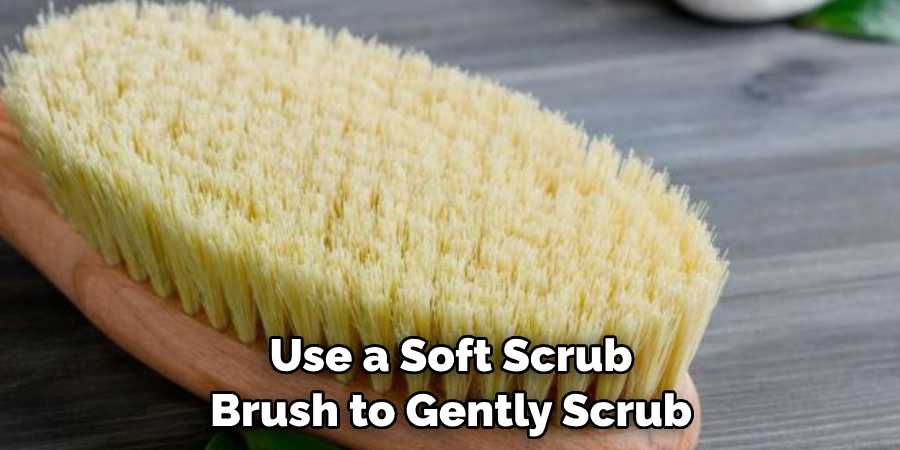
After you have finished scrubbing, give the floor one last wipe down with a damp cloth or mop to get rid of any excess dirt or debris.
Step 4: Let the Floor Dry
Now that you have finished cleaning and scrubbing your powdery concrete floor, it’s time to let it dry. Depending on the temperature and humidity of your home, this could take anywhere from a few hours to a day or two.
When the floor is completely dry, you’re ready to admire your handiwork! Your powdery concrete floor should now look as good as new and be ready to take on all the stresses of daily life.
By following these simple steps, you can easily fix up powdery concrete floors without any need for a professional handyman. So don’t let those unsightly dust particles ruin your once-perfect finish – with just a bit of elbow grease and the right tools, you can get your floor looking better than ever before!
Additional Tips and Tricks to Fix Powdery Concrete Floors
1. Start by mopping the floor with a mild detergent mixed with warm water. This will remove any dirt or grease on the surface.
2. Use a wire brush to scrub lightly at the powdery areas and loosen any ingrained dirt. This will help your repair materials adhere better to the concrete.
3. Rinse the floor with clean water and allow it to dry completely.
4. If necessary, use a concrete patching compound to fill in any cracks or gaps where powder may have been removed during your scrubbing. Allow this patch to cure fully before proceeding.
5. Apply an acrylic sealant or epoxy paint to the entire floor. This will make the surface stronger and more durable, helping to ensure that powdery residue does not reappear. Allow the sealant or paint to dry fully before walking on the floor.
6. Finally, apply a coat of concrete wax for an extra layer of protection against moisture and dirt. Reapply as needed in order to keep your floors looking good and performing well.
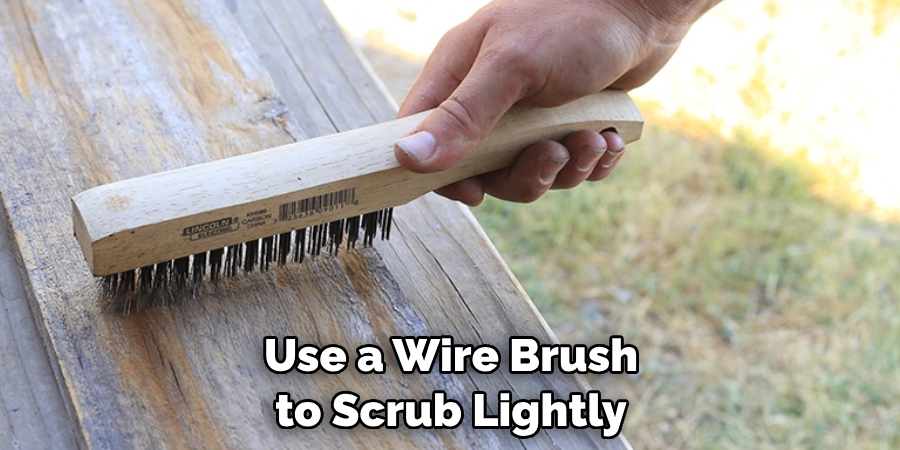
By following these above tips and tricks, you can ensure your concrete floors remain free from powdery residue and other wear and tear. With a bit of effort and maintenance, you’ll be able to keep your floor looking great for many years to come!
Things You Should Consider to Fix Powdery Concrete Floor
1. Check the Sealant:
Unsealed concrete floors are prone to powdering, which can cause dust and other particles to penetrate into the surface and create a chalky finish. Inspect the floor for defects in or absence of sealing agents like paint, epoxy, wax, and urethane. If these have worn away or been neglected altogether, it is likely the cause of powdery concrete floors.
2. Address Moisture Issues:
If the underlying issue is due to moisture, it’s important to take steps to address it. Check for any water sources such as leaking pipes or condensation that could be contributing to a damp environment. If this isn’t the problem, try installing a dehumidifier to reduce moisture levels in the air.
3. Look for Surface Defects:
Even if the floor has been sealed, it is possible that surface defects are causing powdering. Take a closer inspection of the concrete and look for cracks, chips, or any other damage that could be leaving pores exposed to dust particles. Fill in any gaps with a concrete patch or repair any loose sections.
4. Consider Resurfacing:
If the floor has already been sealed and chemicals won’t help, then it’s time to consider resurfacing as a last-ditch effort. This process involves grinding away the existing top layer of the concrete, cleaning out any debris, and adding new sealant. This should help to create an even and dust-resistant surface.
Taking the time to properly address the source of powdering is essential for preventing it from recurring in the future. With proper maintenance and care, you can keep your concrete floors looking their best for years to come.
Precautions Need to Follow for Fixing Powdery Concrete Floor
1. Ensure that the surface is completely dry before commencing work. Moisture can cause the mortar to not stick and weaken the bond between it and the concrete floor. If necessary, use a dehumidifier or air mover to ensure complete drying.
2. When mixing, follow manufacturer instructions included in the packaging of materials used for repairing the powdery concrete floor. Mixing too much or too little of an ingredient can lead to weak bonds and ultimately poor results.
3. Wear protective gear such as gloves, eye shields, and long-sleeve clothing when mixing materials and handling mortar for repair work on a powdery concrete floor.
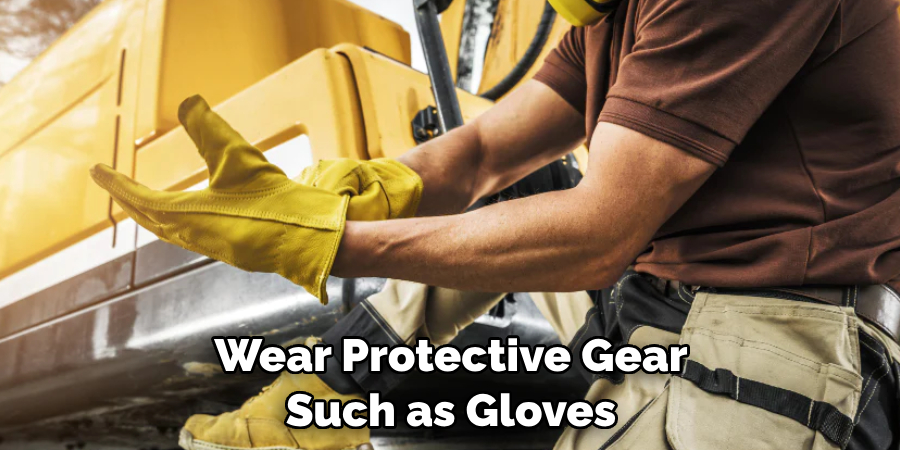
4. Make sure you are using the correct type of mortar for the job. Different types of mortar are used for different repair projects and have varying curing times.
5. Use a trowel to level out the mortar and create an even surface before it sets in order to reduce the chances of bumps or dips once it dries completely.
6. Allow the mortar sufficient time to cure before traffic or furniture is placed on the repaired area. The mortar needs time to properly set and harden, otherwise, it may not provide a lasting solution to fixing the powdery concrete floor.
7. After curing is complete, use a sealant product to protect the newly repaired surface from moisture infiltration that could cause further damage. Make sure you select one with a high UV rating for best results.
Following these steps when fixing a powdery concrete floor will give you the best chances of success. By taking proper precautions and following manufacturer instructions, you can ensure a long-lasting repair job that looks professional.
Frequently Asked Questions
How Can I Fix a Powdery Concrete Floor?
The best way to fix a powdery concrete floor is to use an overlay or topping. This involves applying a layer of material over the existing surface and adding texture. Another option is to sand the surface with diamond grinding or shot blasting. These abrasive methods will help to improve the adhesion of the new material. For more serious damage, you may need to remove and replace the existing concrete floor.
What Is a Concrete Overlay or Topping?
A concrete overlay or topping is a layer of material applied over an existing surface. This type of coating can help fill in cracks, patch imperfections, and restore texture to the surface. It is a durable, long-lasting solution that can improve the look and feel of your concrete floor.
What Is Shot Blasting?
Shot blasting is an abrasive process used to smooth and level concrete surfaces. During this process, small metal beads are shot at high pressure against the surface of the concrete floor. The beads grind away imperfections, leaving a smoother, more uniform surface. This method is typically used for large areas or floors that require extensive repair.
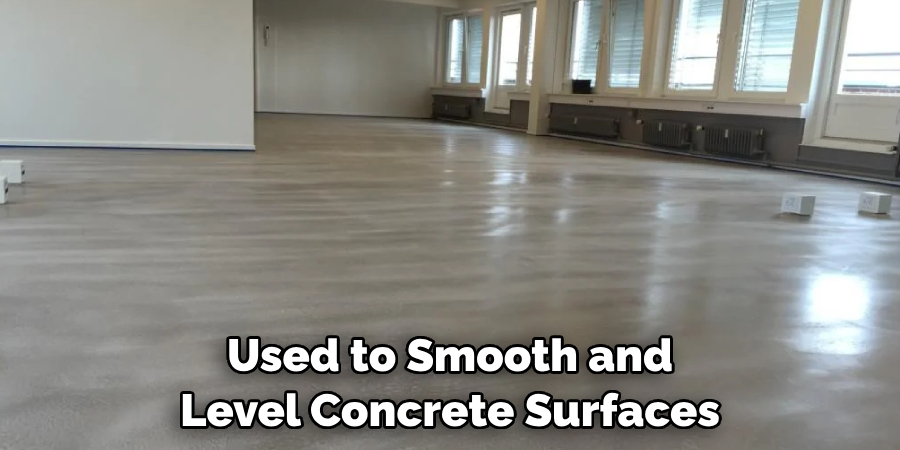
Conclusion
In conclusion, fixing a powdery concrete floor is an attainable goal that will make your home more aesthetically pleasing and structurally sound. By using the methods outlined in this blog post, you can have beautiful, reinforced flooring in no time.
Now that you know how to fix powdery concrete floor, why not learn the next task of how to remove a stopper from a bathroom sink? It’s not as intimidating as you might think and there are some simple techniques you can use to complete this job too. Don’t wait any longer: now that you know the right steps for fixing powdery floors, take charge of your own home improvement project today and enjoy the results every time you see your beautifully re-sealed floors!
